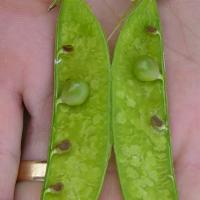Diagnosing frost in field peas
Of the pulses, field peas are more vulerable to frost due to thin pod walls and exposure of flowers to frost.
What to look for
- Low lying areas, light-coloured soil types, dry soil and areas with more retained stubble are likely to be more damaged.
Paddock
- Plants with wilted upper foliage that shrivels and dies, or blistered pods.
- These frozen upper stems become discoloured (dark green directly after thawing) and associated foliage shrivels and dies.
- Often the damaged tissue (stem and pods) will take on a brown colour due to bacterial fungal infection.
- Stems have surface splits that turn brown with a mushy interior.
- Pods have pale surface spots or blisters and brown mushy lesions.
- Developing pods abort and fall off.
- Developing seed may abort.
- Unaffected parts of the plant grow, flower and set seed if there is sufficient time and soil moisture (refer to Figure 3).
Plant
Where does it occur?

Temperature
- Frost damage occurs when night air temperature falls below -2°C.
- Field peas become more susceptible throughout flowering and bud formation when the plant is rapidly growing.
Management strategies
- Frost damage is irreversible, however managing a crop to only avoid frost will come at a yield cost and potentially increased disease risk. It is advisable that after a frost event, to make note of the location and severity, as this will help to inform future crop choice and post frost decisions.
How can it be monitored?
- Check low lying, light coloured soil types and known frost prone areas first, then check other areas.
- To identify frost damage check for flowers failing to set pods and open developing pods that have a scarred surface to check for mushy, shrivelled or abnormal grain.
See also
Further information
Where to go for expert help
Page last updated: Monday, 27 November 2017 - 12:40pm




